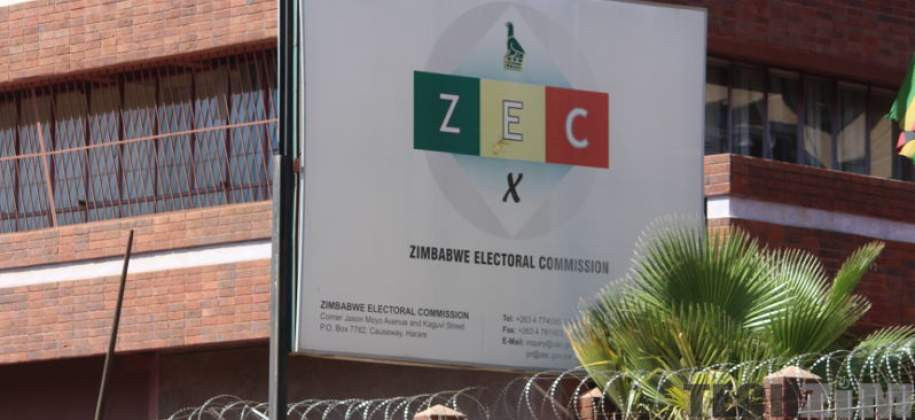
ZIMBABWE’S economic landscape has been fraught with challenges, particularly in managing the currency situation and combating hyperinflation.
While the debate between fully dollarising the economy and continuing with volatile local currencies remains critical, it has become more apparent with the recent data indicating significant revenue losses due to informalisation and exchange rate mismanagement.
In this light, what then stands as a better devil for the economy between a full-blown dollarisation drive and sticking to a volatile series of local currencies?
According to data presented at the 2024 Zimbabwe Economic Development Conference, a study focusing on 148 countries over a 28-year period revealed a negative correlation between informalisation and tax revenue where every 1% increase in informality equates to a 0,45% loss in tax revenue.
The Zimbabwean economy, on the other hand, presently comprises of over 75% informality against the aggregate economic activities. This has significantly surged in recent years amid heightened currency volatility as arbitrage gained momentum.
In this light, between 2020 and 2023, the Zimbabwean government reportedly lost at least US$3 billion in potential revenue due to its handling of the exchange rate.
This constitutes, conservatively, US$1,15 billion potentially lost to informalisation, alongside losses from an overvalued currency and inflation-affected payments. These figures underscore the urgent need for a stable and effective currency strategy, and highlight the negative impact of having a weak local currency.
On the other hand, alternatively, adopting the US dollar (USD) as the sole currency may stabilise inflation and exchange rates, mitigating the aforementioned value losses while bringing with it a new set of challenges.
- To or not to deduct Aids Levy from VAT in Zim
- Charging school fees in forex unreasonable
- Stop meddling in PSMAS affairs
- Village Rhapsody: Zimbabwe’s currency merry-go – round continues
Keep Reading
It is, therefore, imperative to assess between the pros and cons of either to ascertain the best strategy that speaks to the long-term blueprint of Zimbabwe.
Zimbabwe’s history of hyperinflation can be mitigated by leveraging the stability of the USD, providing a more predictable economic environment and subsequently eradicate any exchange loss potential.
A stable currency can attract foreign direct investment (FDI. Investors are more likely to invest in an economy where the currency is stable and predictable, potentially spurring economic growth and development.
The stability of the USD can make Zimbabwe a more attractive destination for investors, who would not have to worry about currency devaluation affecting their returns.
This influx of investment can lead to job creation, infrastructure development, and overall economic growth.
Furthermore, a hard currency as a sole functional currency in Zimbabwe can facilitate trade by reducing exchange rate risks, making it easier for Zimbabwean businesses to engage in international trade.
With a stable currency, the informal sector may shrink as businesses and individuals gain confidence in the formal economy. In hindsight, this would aid in reducing the revenue losses associated with informalisation.
As aforementioned, at over 75% dominance of overall economy, the informal economy in Zimbabwe is substantial, contributing more to overall GDP. However, this informalisation leads to significant revenue losses for the government, as informal businesses often do not pay taxes.
By adopting the USD, the government can easily encourage more businesses to operate formally, thereby increasing tax revenues and reducing the economic distortions caused by informalisation.
However, the USD is a very strong currency regionally and globally.
This would then have the effect of increasing the purchasing power of locals on regional and international goods, which reduces the purchasing power of foreign entities on Zimbabwean goods.
In other words, this would widen trade deficit as exports become too expensive while imports become cheaper. Ultimately, potential of FDI’s will be suppressed.
However, it is also important to note that FDI appetite is already suppressed by local currency volatility, which renders the factor a non-performer.
This then leaves us with currency stability as a drawing factor. At a rate of US$3 billion in three-years, which draws down to a potential loss of at least a billion a year, the loss to exchange rate volatility far outweighs the potential loss in exports if Zimbabwe was to fully dollarise.
This is because a huge chunk of exports in Zimbabwe is in the form of minerals, which are immune to currency developments, locally. Exportation of finished products remains alarmingly low due to weakened production capacity in the highly volatile environment.
Nonetheless, a major issue in adopting the US$ may be the loss of monetary policy control. Zimbabwe’s central bank would no longer have the ability to print money or adjust interest rates to respond to economic conditions.
This lack of control may be detrimental in times of economic crisis, as the government would have fewer tools to manage the economy. Furthermore, relying solely on the USD will render Zimbabwe heavily dependent on foreign currency inflows.
Any disruptions in remittances, exports, or foreign aid will thus lead to liquidity crises. Zimbabwe’s economy is already heavily reliant on remittances from the diaspora, which provide a significant source of foreign currency.
However, these inflows can be volatile and subject to external factors beyond the government’s control. For example, a global economic downturn could reduce remittances, leading to a shortage of USD in the economy.
This dependence on foreign currency inflows will then create vulnerabilities and make the economy more susceptible to external shocks.
Maintaining a local currency allows Zimbabwe to retain control over its monetary policy. The central bank is able to print money and adjust interest rates to respond to economic conditions.
This flexibility can be crucial in managing the economy and responding to economic shocks. For example, during a recession, the Reserve Bank of Zimbabwe (RBZ) can lower interest rates to stimulate economic activity, while during periods of inflation, it can raise interest rates to cool down the economy.
This ability to adjust monetary policy can help stabilise the economy and promote sustainable growth. It is also important to appreciate non-financial factors, realising how having a local currency can symbolise economic sovereignty and national pride.
It allows the government to implement policies tailored to the country’s specific needs. For many countries, having a national currency is a symbol of economic independence and sovereignty.
It allows the government to pursue policies that reflect the unique economic conditions and priorities of the country. For example, the government can use monetary policy to support specific sectors of the economy, such as agriculture or manufacturing, or to address regional disparities.
This ability to tailor economic policies to the country’s needs can promote inclusive and sustainable development. Given the significant revenue losses due to informalisation and exchange rate mismanagement, fully dollarising Zimbabwe’s economy appears to offer more immediate benefits in terms of stability and investor confidence.
However, the loss of monetary policy control and dependence on foreign currency inflows are critical drawbacks. A balanced approach that includes strengthening local currency management and economic policies, while considering partial dollarisation, may provide a more sustainable solution for Zimbabwe’s economic future.
In conclusion, the decision between fully dollarising the economy and continuing with volatile local currencies is complex and multifaceted.
While fully dollarising the economy can provide stability and attract investment, it also comes with significant challenges, such as increased imports and reduced exports, the loss of monetary policy control and dependence on foreign currency inflows.
On the other hand, maintaining a local currency allows for greater monetary policy flexibility and economic sovereignty, but it also carries the risk of hyperinflation and exchange rate volatility.
- Equity Axis is a financial media firm offering business intelligence, economic and equity research. The article was first published in its latest weekly newsletter, The Axis.











